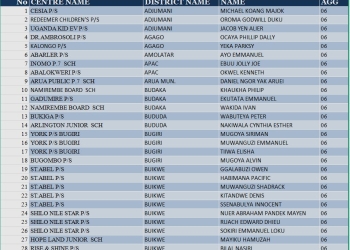
The biggest portion (Shs17 trillion), which is 35.3% of the total national budget for 2022/23 has been earmarked for interest and debt payment.
In the National Budget speech for the Financial Year 2022/2023, Finance minister Matia Kasaija said of the total expenditure of Shs.48.1 trillion, Shs17 trillion will go towards paying debts.
Wages and salaries will take Shs. 6,366.9 billion, interest payments will take shs. 4,691.9 billion, and non-wage recurrent expenditure is shs. 14,259.4 billion and development expenditure Shs. 14,565.9 billion.
Domestic Revenue amounts to Shs.30.797 trillion of which Shs23.754 trillion will be tax revenue and Shs.1.7 trillion will be Non-Tax Revenue.
According to reports from the finance ministry, interest and debt payment budget increased from sh8.5 trillion in the 2017/2018 financial year to sh15.1 trillion in the 2021/2022 financial year.
“Madam Speaker, as at the end of December 2021, Uganda’s total public debt stock stood at Shs73.5 trillion (equivalent to USD 20.7 Billion), of which External Debt amounted to Shs45.72 trillion (equivalent to US Dollars 12.9 billion) and Domestic Debt amounted to Shs. 27.77 trillion (equivalent to US Dollars 7.84 billion). This represents nominal Debt to GDP ratio of 49.7 percent,” he said.
But Minister Kasaija said government is working to reduce the level of domestic borrowing over the medium term to an average of 2.2 percent of GDP per year.
“This ratio will be reduced further to a policy target of 1.0 percent of GDP over the long term,” he said.
The minister also said they will implement the Public Investment Financing Strategy that will ensure alignment of suitable financing modalities with the nature of Government programmes and projects.
The other will be by implementing the Financial Year 2022/23 borrowing strategy which is consistent with our Medium-Term Debt Management Strategy, to avoid risks associated with unsustainable debt.
The 2022/2023 budget will mark the third financial year of implementing the National Development Plan Three (NDP III). It is anticipated that at the end of it, 60% of the targets in NDP III will have been realised.
One of the key NDP III targets is to increase the per capita income (average amount of money earned by every Ugandan) from the current $879 (sh3.2m) to $1300 (sh4.8m) by 2025.
Last week on Tuesday during the State of the Nation address, President Yoweri Museveni announced that Uganda had reached the lower middle-income stage with a gross domestic product (GDP) per capita of $1,046 (sh3.7m).
The Government is implementing Vision 2040 in a phased manner through a series of five-year development plans.
In Vision 2040, the Government planned to reach the upper middle-income status with every Ugandan earning $9500 (sh35.1m) and with a poverty rate of only 5%.

















